Silent Speech
In animations of hands offering up poetic inscriptions, Shirin Neshat articulates how the urge to speak has the power to communicate, despite coerced silence.
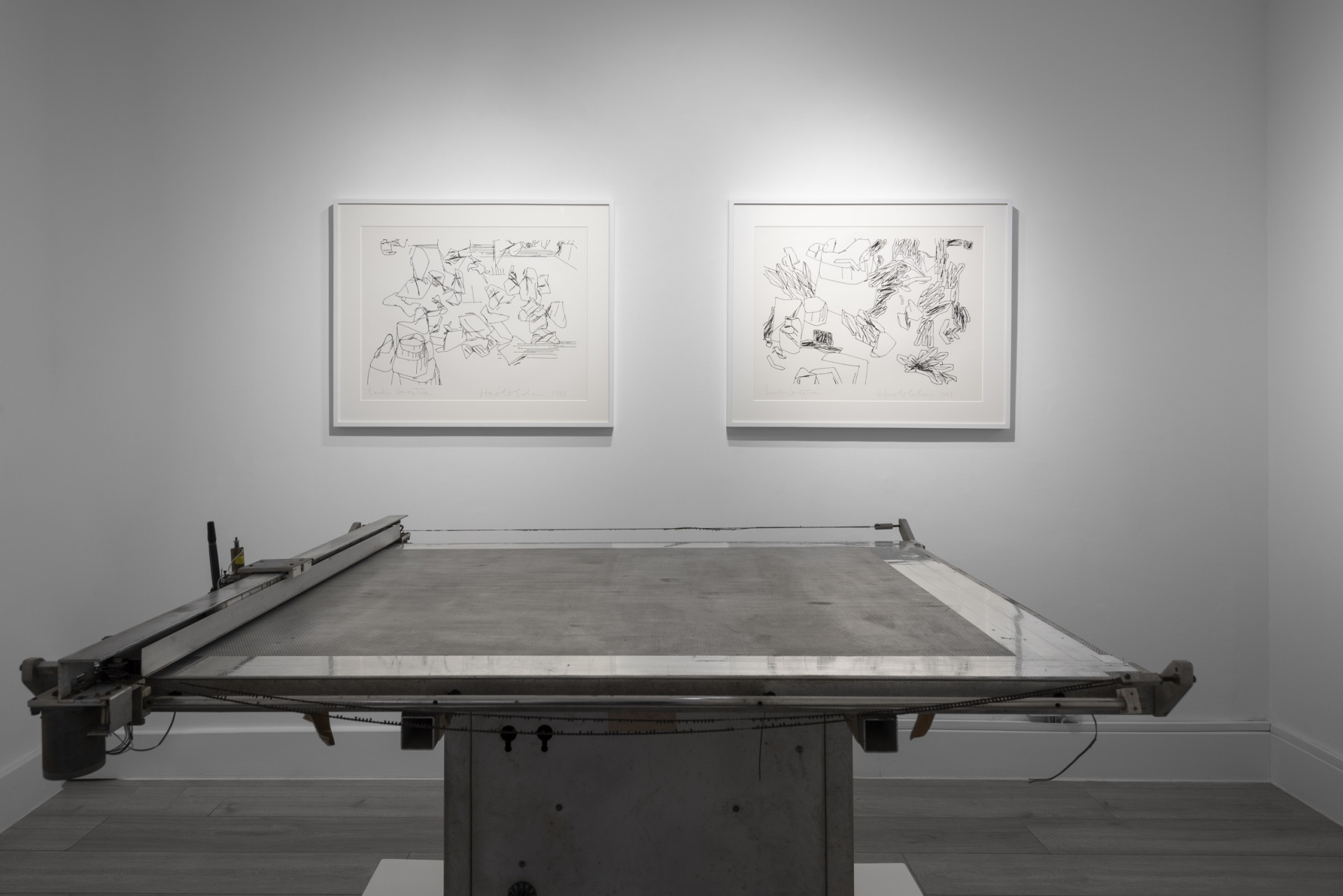
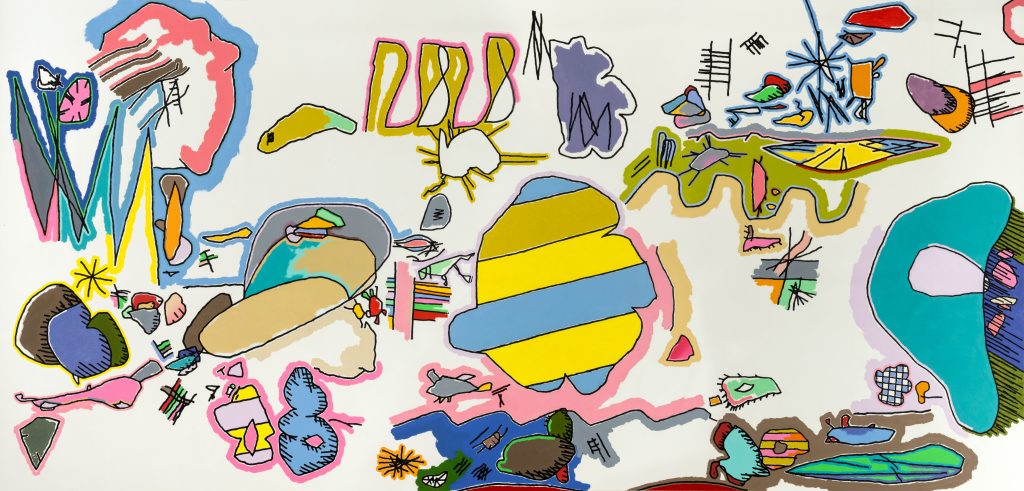

The role of AI, and its capacity to express a form of creativity that we can recognize, seems to be a subject on everyone’s lips. This conversation has been foisted on us by the breakneck speed of advancements in machine learning over the past decade, with a slew of text-to-image AI systems including DALL-E, Midjourney, and Stable Diffusion all released for public use this year. The most fraught debate yet erupted after an AI-generated image won the top prize for digital art at an otherwise low-profile annual competition run by the Colorado State Fair in early September. Detractors of the technology called out the potential copyright and ethical issues of training a machine on millions of images scraped from the web without permission, and warned of the threat it could pose to creative livelihoods. Others insisted on the inevitability of such new technologies emerging, with which sufficiently talented artists will want to collaborate rather than compete.
Many of these questions were already being contemplated half a century ago, with the creation of AARON, a series of programs written by the British-born artist Harold Cohen. The program’s outputs—some of the earliest examples of computer-generated art—are on view at Gazelli Art House in London, through November 19. (The gallery began representing the Harold Cohen Estate in July, six years after the artist’s death at the age of 87.) The comprehensive display charts AARON’s development in drawings and paintings dating from 1977 to 2014. Charmingly nonsensical sketches segue to impressive portraits and still lifes before a drifting back to lyrical abstraction towards the end of Cohen’s career. Compared to the realistically rendered imagery generated by text-to-image models today, these boldly delineated, multicolored doodles are naive. Nonetheless, Cohen’s decades-long interrogation of artistic and technological creativity manages to intrigue. Against the backdrop of recent developments, his once-niche project is now almost prophetically pertinent.

When, in 1968, Cohen took a job as a visiting lecturer in the art department at the University of California San Diego (UCSD), he was already a painter of some renown in the UK. Though he had not previously worked with technology, he was introduced by a grad student to the college’s computer facilities and the programming language FORTRAN. In 1971 he presented an initial prototypal painting system to the Fall Joint Computer Conference, resulting in an invitation to Stanford’s Artificial Intelligence Lab—where, in 1973, AARON was born. These hand-coded programs were not AI in the sense that we understand today, in which a machine is able to learn from vast troves of data thanks to powerful neural networks. Their “expert systems” would instead store the knowledge of a human expert reformatted into a complex set of rules intended to simulate human decision-making. A robot engineered by Cohen allowed AARON to act and produce “drawings” in the physical world. His first robot, the “turtle”—so named because it is small and has wheels to move along the ground—is on view at Gazelli alongside its larger, more sophisticated successor, which is equipped with a robotic arm to maneuver pen across paper.
In a paper published in 1973, “Parallel to Perception: Some Notes on the Problem of Machine-Generated Art,” Cohen elaborated his motivation for testing whether a machine could be capable of “human art-making behavior.” He defined previous technological innovations such as cameras as mere “tools [that] serve generally to extend or delimit various human functions” before setting out his quest to prove the computer’s comparative autonomy, by teaching it to produce non-deterministic outputs that are on each occasion new and unpredictable. Viewers of the earliest works in the show, such as the arrangement of cloud-like forms and squiggles in Untitled Amsterdam Suite II (1977), which Cohen colored in to suggest a landscape, will certainly be hard-pressed to imagine such seemingly random compositions being produced twice.
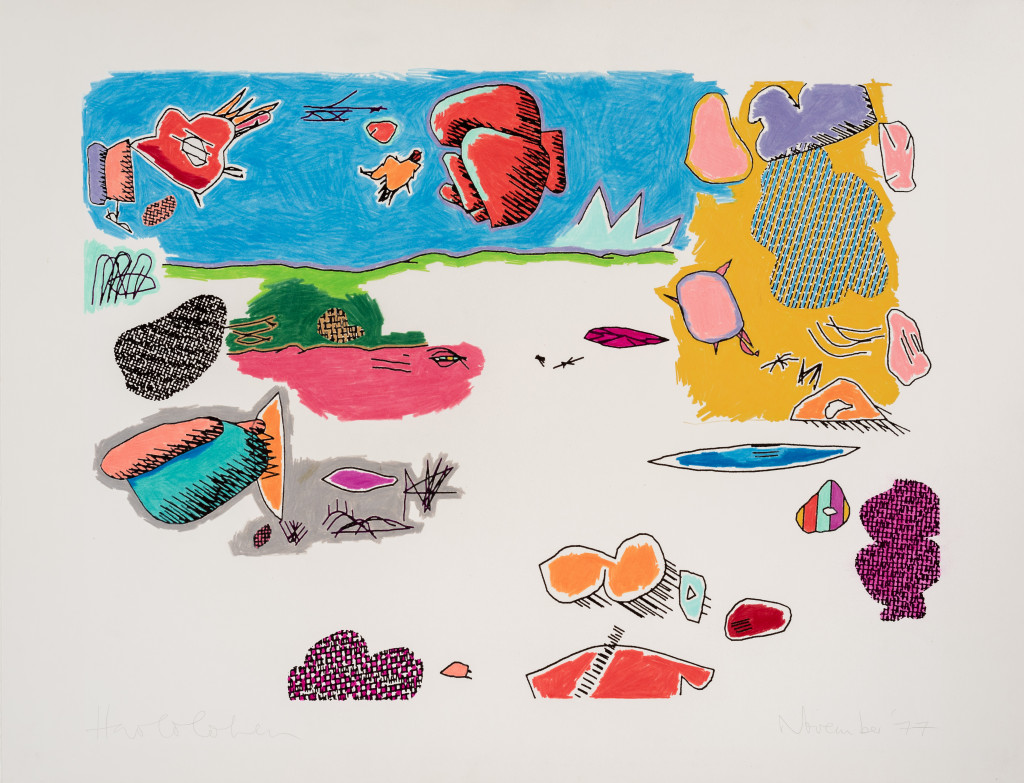
Optimistically, Cohen proposed that “just as the artist will deal with the drawings in terms of gestalts rather than in terms of raw data, so the machine will need to formulate characterizations of the current state of drawing, rather than treating it merely as an agglomeration of marks and non-marks.” With new iterations of the program he added more sophisticated features, eventually creating a feedback loop that utilized archival memory so that past actions could be recalled to inform future actions according to specific instructions, such as never to cross two lines. When teaching AARON to draw human figures in the 1980s, Cohen claimed to have created as many as four thousand rules governing the head alone, to help the machine learn concepts such as how a nose fits on a face. An impressive variety of output was achieved, advancing from the stylized bodies—each a jigsaw of colorful outlined shapes, sometimes repeated—of the “Athlete Series”(1986) to an apparent self-portrait (of AARON or Cohen?) in 1992.
During live demonstrations, Cohen was concerned not to come across as a puppeteer and fended off any implication that he was the true author of the works.
During live demonstrations, usually held at museums, Cohen was concerned not to come across as a puppeteer and fended off any implication that he was the true author of the works. Though he had to add the colors to AARON’s canvases until the 1990s, when he finally managed to teach the program to apply them independently, he also claimed that he was being outperformed—“AARON drew so much better than [I] did”—and gave up his solo practice. Yet examples of his own paintings not in the show, such as the brightly colored, biomorphic abstractions Transit (1963) and Pastoral (1965), do evince some clear similarities with AARON’s outputs. Both those canvases were included in the British Pavilion at the Venice Biennale in 1966: as a reviewer in Studio International commented, “In a Harold Cohen there will be fragmentary movements of line and various areas of textured or flat colour where the tensions arise from the way they grow together.” Perhaps over time he came to recognize the entwined nature of his and AARON’s work: in 2011, he staged a show at the UCSD gallery titled “Collaborations with My Other Self.”
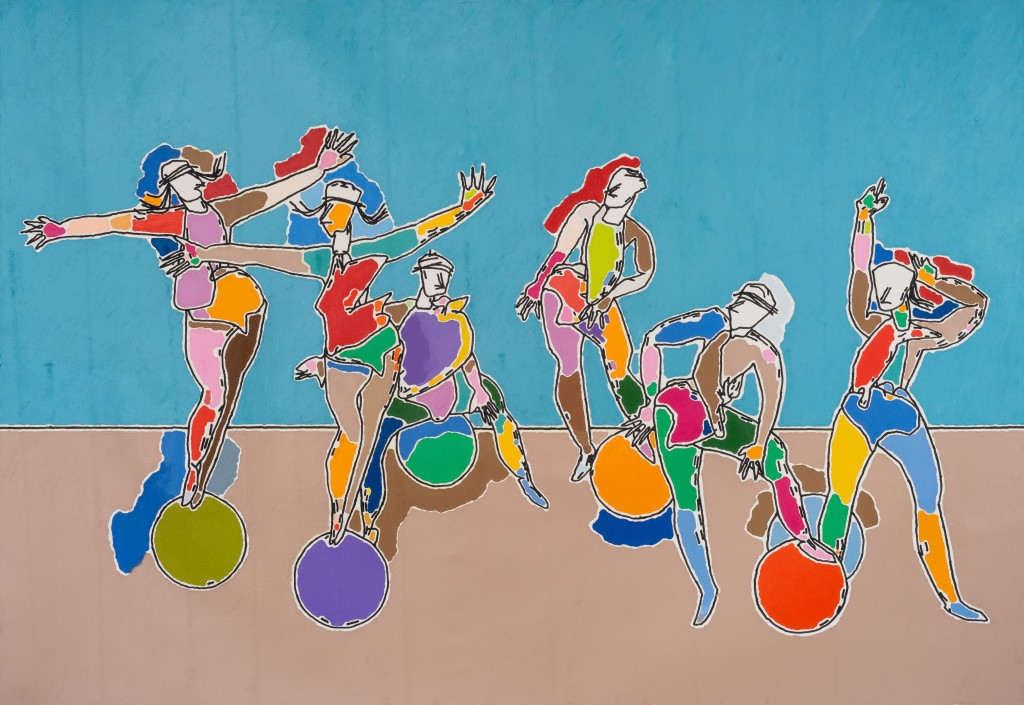
If Cohen ended up just automating the stylistic quirks specific to his own practice, this was probably inevitable given the inherent limitations of an “expert system” that can follow instructions but is unable to grasp concepts on its own in the way that AI can today. Teaching a knowledge-based machine to make decisions of any complexity is an arduous task that for Cohen was the work of a lifetime, including the years spent developing his own artistic expertise. Whether convincingly autonomous or not, AARON was ultimately a proof of concept rather than a useful device to either challenge or assist the artist. By contrast, today’s text-to-image generators, mostly built by companies that may or may not have their agenda, are intended for mass use. The sheer quantity of indiscriminately scraped training data and the highly complex neural networks required to make sense of it mean that the origins of their outputs are much more slippery. The remixed results often feel genuinely unexpected and, helpfully for users, can be conjured in an instant with little to no effort. The flip side is that, notwithstanding savvy prompt engineering, they tend to fall flat as creative expressions.
Whether convincingly autonomous or not, AARON was ultimately a proof of concept rather than a useful device to either challenge or assist the artist.
Today, AARON represents a set of outdated responses to the idea of artificial intelligence: a fixation on whether machines are capable of creativity; the pouring of time and energy into making autonomous entities rather than useful tools. In its time, though, Cohen’s invention was conceptually challenging enough to earn exhibitions in major institutions like San Francisco Museum of Modern Art (1979), the Tate in London (1983) and the Buhl Science Center in Pittsburgh (1984). During an exhibition at the Computer History Museum in California in 1995, the museum’s executive director Oliver Strimpel told the Washington Post that human intelligence had once been considered an impenetrable “black box”—but thanks to advances in computing, “the idea of intelligence has been unpacked a bit more.” Ironically, the term “black box” is how we now describe the uninterpretable complexity of deep neural networks. And the notion that much light can be shed on the nature of human cognition by a list of rules now seems ridiculous. Yet perhaps newer AI developments such as text-to-image do make some incidental insinuations about how our minds work. Worries about the copyright of work that has been fed into AI generators are legitimate, but might the viral appeal of the output images also imply that what we extol as creativity or art is simply the processing and repackaging of an immeasurable quantity of data?
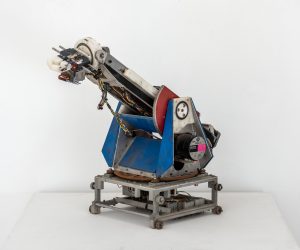
Cohen was not able to emulate human cognition with the technology available to him, but he had some prescient reflections that speak to the questions more complex AI would go on to raise. Expounding on the challenges of exploring human creativity in his 1973 essay, he wrote that “concepts are formed on the basis of prior concepts, decisions are made on the basis of feedback from the environment and from the results of previous decisions.” And so: “The probability is that, if one could identify the starting point for an artist’s whole life’s work, one would find a set of concepts completely formulated if not completely digested, given to him and not initiated by him.” Yet he also maintained that even if a machine with a human-like memory could be invented (which did not, he added, seem likely in the near future), actual humans would still have the upper hand when it comes to creative expression, owing to our intentions and interiority. “Art is not, and never has been, concerned primarily with the making of beautiful or interesting patterns,” he declared. “The real power, the real magic … rests not in the making of images, but in the conjuring of meaning.”
Jo Lawson-Tancred is a freelance art writer living in London.
